Nijmegen, Bridge
Nijmegen: city in the Netherlands, where several Roman settlements have been discovered.
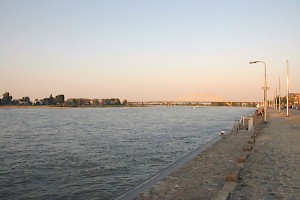
Near the modern railroad bridge across the river Waal, there used to be an old bridge of which hardly anything survives, except for some wooden piles, the beams that were placed across them, and the metal frame (the "shoe") that protected the bottom of one of the piles. They were discovered in the 1980s and can only be Roman.
The bridge, situated between Noviomagus and the river port, was part of a road that connected the Nijmegen settlements to the sanctuaries at Elst and Arnhem-Meinerswijk on the Rhine. It is possible that in the river, more piles and big stones can be found, but investigation will be very difficult because the Waal is usually full of big ships.
It is also possible that the piles belong to the bridge that was rebuilt in 70 by soldiers of the Second Legion Adiutrix, which is mentioned by the Roman historian Tacitus.note He tells that in the final stages of the Batavian Revolt, when the Romans had already pushed back the rebels to their homeland and were preparing to invade it, the Batavians tried to destroy a bridge.

When the river was dredged out in 1915, a splendid iron cavalry mask was discovered; it may have been lost or thrown into the river as a sacrifice. The surface was covered with bronze and a silver coating, with some pieces of gold. The five little busts - two men and three women - that decorated the helmet are figures from the cult of Bacchus. It can be dated to the second half of the first century.
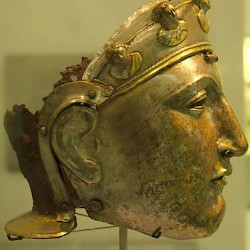 Cavalry mask, found in the river Waal |
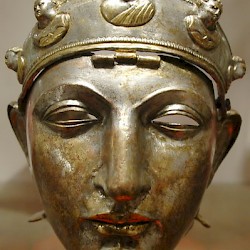 Cavalry mask, found in the river Waal |
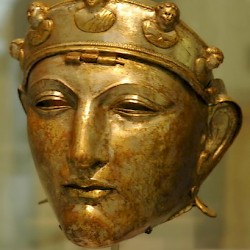 Cavalry mask, found in the river Waal |
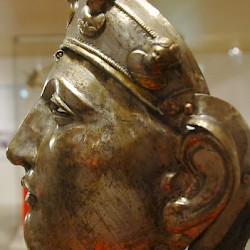 Cavalry mask, found in the river Waal |